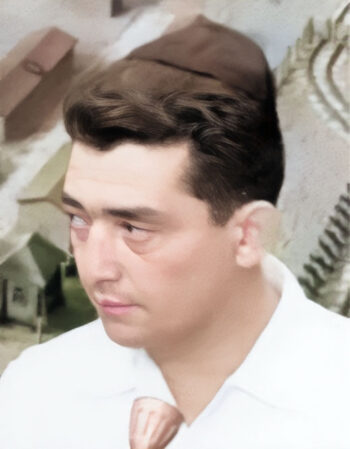Rosenberg, Eliyahu

Eliyahu (also Ela, Elias) Rosenberg was a Polish Jew deported to the Treblinka Camp on 20 August 1942. He made a deposition in front of the Historical Commission of Warsaw, probably in 1945, which was recorded in very bad French and is barely comprehensible. It only mentions in passing that he had to drag corpses out of a gas chamber to a mass grave, but mentions no specifics at all.
Some two years later, in December 1947, probably after having read accounts from other former inmates, foremost that of Jankiel Wiernik, Rosenberg signed a 12-page statement in German, which now included more details about the gas chambers.
Rosenberg also testified during the Jerusalem show trial against John Demjanjuk. However, this testimony was entirely focused on the defendant rather than providing any details about the alleged killing procedure. The only noteworthy claim in it is his assertion that Ivan the Terrible (which he claimed John Demjanjuk to have been) tried to force him into having sex with the dead bodies of gassed women – which is another example of made-up Holocaust pornography invented by a sick mind. (See the entry on Adolf Rögner for more examples.)
Here are some highlights from Rosenberg’s 1947 deposition:
- Killing with the exhaust of a single Diesel engine, with 35 minutes for the last victim to die, verified by listening at the door until all was quiet. However, diesel exhaust is unable to kill anyone within 35 minutes.
- In the roof, there was a small window used by a man to control the gas supply. Such a roof window is not part of the orthodox Treblinka narrative. It is unclear how a man operating the diesel engine inside the building could control the engine, while looking evidently from outside the building through a window in the roof (or maybe through three windows, one for each chamber).
- Four hundred people were squeezed into one chamber of the first gas-chamber building – which according to the orthodoxy measured 4 m × 4 m, hence 16 m², resulting in an impossible packing density of 25/m².
- The tightly packed victims could not fall down, hence kept standing after death – which is physically impossible.
- In March 1943, new gas chambers were built, with room for up to 12,000 people. However, the orthodoxy insists that those chambers became operational in October/November 1942. They supposedly contained 10 chambers of 32 m² each. Therefore, Rosenberg’s victim count would have resulted in an impossible packing density of 37.5 people per m².
In this testimony, Rosenberg closely matched claims made by Jankiel Wiernik in his 1944 booklet, probably known to Rosenberg, regarding the number of gas chambers inside the old and new gassing facilities, as well as their gassing capacities. Rosenberg also incorporated Wiernik’s idea of openings in the roof, although he changed their purpose.
(For more on Rosenberg, see Mattogno 2021e, pp. 187-190; Mattogno/Graf 2023, pp. 170f.)

You need to be a registered user, logged into your account, and your comment must comply with our Acceptable Use Policy, for your comment to get published. (Click here to log in or register.)